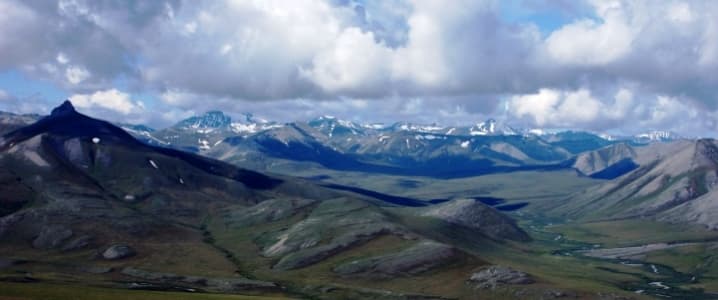The Trump administration is trying to lay the groundwork to open up the Arctic National Wildlife Refuge (ANWR) for oil and gas drilling, according to a report last week from the Washington Post.
It won’t be easy, and it is not guaranteed to work, but the Department of Interior is hoping to crack open the door to drilling in ANWR, which has been off limits for decades. The Post reports that the Department of Interior is working to authorize seismic testing, a necessary precursor to new drilling. The agency does not have the authority to greenlight drilling itself – only legislation passed by Congress can officially open up ANWR to the industry.
But the Department of Interior is clearly betting that they can start the process by allowing seismic testing, in the event that Congress acts at some point in the future to offer up ANWR to oil and gas companies. “When finalized, the new regulation will allow for applicants to [submit] requests for approval of new exploration plans,” U.S. Fish and Wildlife Service acting director James W. Kurth wrote in an August 11 memo.
Drilling in ANWR has been extremely controversial and a highly partisan issue, something that Democrats and Republicans have fought over for years, across multiple administrations. But with Republicans in control of both houses of Congress and the White House, the prospect of finally allowing drilling in ANWR seems closer to a reality than ever before.
“The administration is very stealthily trying to move forward with drilling on the Arctic’s coastal plain,” Defenders of Wildlife President Jamie Rappaport Clark, who led the Fish and Wildlife Service under President Bill Clinton, told the Washington Post. “This is a complete about-face from decades of practice.”
Related: Supermajors Prepare For A Permian Bidding War
It’s a gamble that will certainly run into lawsuits from environmental groups who will fight tooth and nail to keep drillers away from the unspoiled wilderness. “ANWR is an American Serengeti. You can have the oil. Or you can have this pristine place. You can’t have both. No compromise,” Robert Mrazek, a former New York congressman and chair emeritus of the Alaska Wilderness League, told Fortune.
Alaska’s congressional delegation is desperate to find a new source of oil supply because the state’s output has been in long-term decline for decades. Production peaked at just over 2 million barrels per day (mb/d) in the late 1980s, but has declined since then. For much of this year, the state’s output stood at just over 500,000 bpd, although it dipped below that level in June, the latest month for which data is available.
Without new supply, the Trans-Alaskan Pipeline faces an uncertain future. Operating below capacity presents operational challenges. “Less oil means slower-moving oil. Slower oil means colder oil. And the slower and colder the oil, the more complicated the challenges for Alyeska Pipeline Service Company, the pipeline’s operator,” the company’s website says. “The best long-term solution is more oil. In the meantime, daily throughput is already lower than it was at pipeline startup in 1977.”
Water can freeze within the pipe and wax can harden, requiring more frequent cleaning and downtime. At some point, if production drops below a certain point, the pipeline will have to operate intermittently.

(Click to enlarge)
That puts a premium on new sources of supply.
But it is highly uncertain how interested the industry will be in ANWR. In the past, before the shale revolution when onshore U.S. oil production was declining, ANWR was highly prized by the industry. There was also a lot more interest when oil prices traded at $100 per barrel.
That interest has mostly evaporated in recent years. The profitability of producing in remote northern Alaska, particularly when the resource base is unknown, is questionable at best. Offshore Alaska has all but been written off for the foreseeable future – Royal Dutch Shell shut down its Chukchi Sea drilling campaign in 2015 when it came up with disappointing results at a time of low oil prices.
Related: Can Oil Prices Hit $60 In 2018?
One could make a better case for onshore drilling in ANWR, but because there has been no activity to date, the industry would need to almost start from scratch. Old seismic studies from the 1980s suggest ANWR holds some 7.7 billion barrels of technically recoverable oil, but the industry would need to conduct new seismic surveys using updated equipment and technology.
On the other hand, the Post points out that because companies like ConocoPhillips have drilled in the National Petroleum Reserve-Alaska (NPR-A) (to the west of Prudhoe Bay), even when oil prices have been at low levels, there would also be interest in ANWR. In fact, a spokesperson for Conoco told the Post that “if ANWR was opened, we’d consider it within our portfolio of opportunities... and it would have to compete with other regions for our exploration dollars,” he said.
In a world of $50 oil, and shale prospects in the Lower 48 that offer much less risk, the economic case of ANWR is shaky. But if the Trump administration has its way, the industry could get a chance to prove that prognosis wrong.
By Nick Cunningham of Oilprice.com
More Top Reads From Oilprice.com:
- Hurricane Damage To Trigger Fuel Glut
- The EV Boom Is Dead Without Proper Support
- OPEC's Strategy To Clamp Down On Cheating


















